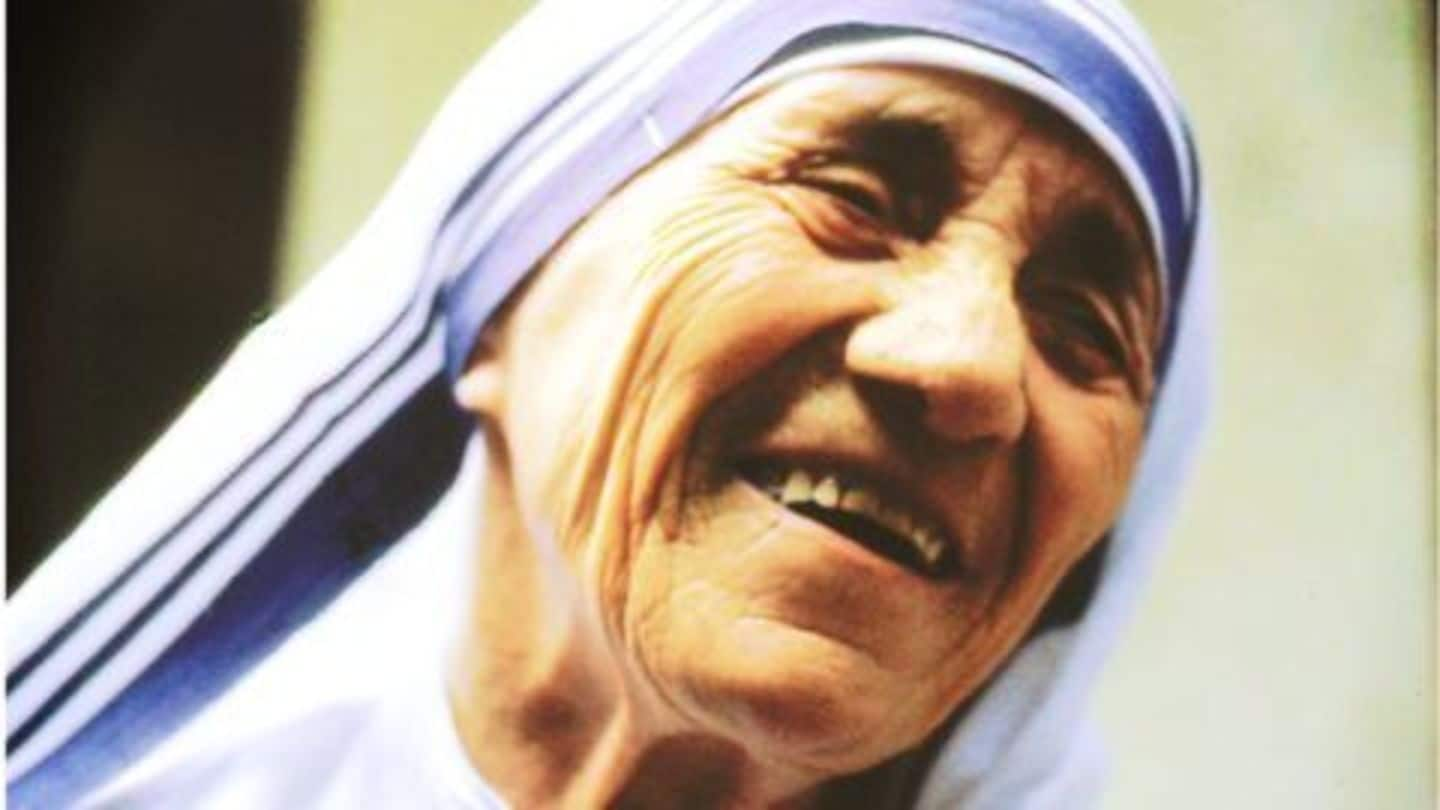
Mother Teresa's elevation to Sainthood
What's the story
Nineteen years after the death of Mother Teresa, who worked for the upliftment of the poor and needy, she will be proclaimed a saint in the Vatican City.
The canonization ceremony would take place a day before her death anniversary, highlighting Pope Francis' Jubilee year of Mercy in St. Peter's Square.
External Affairs Minister Sushma Swaraj and her 12-member delegation will attend the ceremony.
Introduction
About Mother Teresa
Anjezë Gonxhe Bojaxhiu, popularly known as Mother Teresa, was born on 26 August 1910 in Skopje (now Macedonia).
She was an Albanian Roman Catholic nun and missionary; she initially lived in Macedonia, and later in Ireland before moving to India.
She is known for crossing barriers like religions, castes, gender, cultures, etc. through her charitable works.
She died on 5 September 1997.
Charity
Wholehearted free service to the poorest of the poor
Mother Teresa founded 'Missionaries of Charity' in 1950 and Nirmal Hriday in 1952 in Calcutta.
'Missionaries of Charity' runs homes for tuberculosis and leprosy patients, soup kitchens, orphanages, schools, dispensaries, clinics, counseling programmes.
'Nirmal Hriday' or 'Home of the Pure Heart' is for the sick, destitute and dying.
It provides people medical care and an opportunity to die with dignity based on their faith.
Awards
Mother Teresa received several honors for her works
Mother Teresa received several honors but was first recognized by the Indian Government.
She received the Padma Shri in 1962, Jawaharlal Nehru Award for International Understanding in 1969, and highest Indian civilian award, the Bharat Ratna, in 1980.
She had also received Ramon Magsaysay Award for International Understanding in 1962.
She was awarded the Nobel Peace Prize in 1979 to honor her philanthropic spirit.
Controversies
Mother Teresa was a controversial personality
Mother Teresa was a controversial personality during her life as well as after death.
Though she is admired for her selfless charity, she was criticized for the living conditions in the hospices ran by her.
She reportedly believed suffering was God's gift; and despite receiving huge donations, the conditions in the homes were poor.
Also, she received sharp criticism for her anti-abortion views.
Controversial Miracles
Miracles performed with Mother Teresa's intercession
After Mother Teresa's death, the beatification process (for possible canonization) requiring a miracle's documentation began.
The healing of an abdominal tumor of West Bengal's Monica Besra (1998) was recognized by Pope John Paul II in 2002.
Mother Teresa's second miracle for Sainthood involved the complete healing of a Brazilian man with large cancerous tumor in his brain upon praying to her in 2015.
Information
The "miracles"
The miracles performed with Mother Teresa's intercession, which were recognized officially received sharp criticism. Many people, including doctors, believed there was nothing miraculous about them. They claimed the "healing" was only the result of medical treatments.
The Other Side?
Mother Teresa opposed the cure for poverty
Mother Teresa's most outspoken critic was Christopher Hitchens, an English journalist, and literary critic, who confronted her.
In his article, he wrote Mother Teresa's era reminds of "the medieval corruption of the Church."
She called the poor's suffering 'beautiful' and also opposed the cure for poverty.
She was also accused of relations with dictators, forced conversions, gross mismanagement, bad medical care, racism, fanaticism, etc.
Criticism
A friend of poverty, not the poor
Mother Teresa's critics claimed she didn't help or feed the destitute but treated them harshly who later received a painful, miserable death.
She - as the critics say - was a friend of poverty, not the poor; a fanatic who promoted Christianity and took pleasure in the poor's suffering.
She was also called an ultimate politician or agent who worked on the Vatican's behalf.